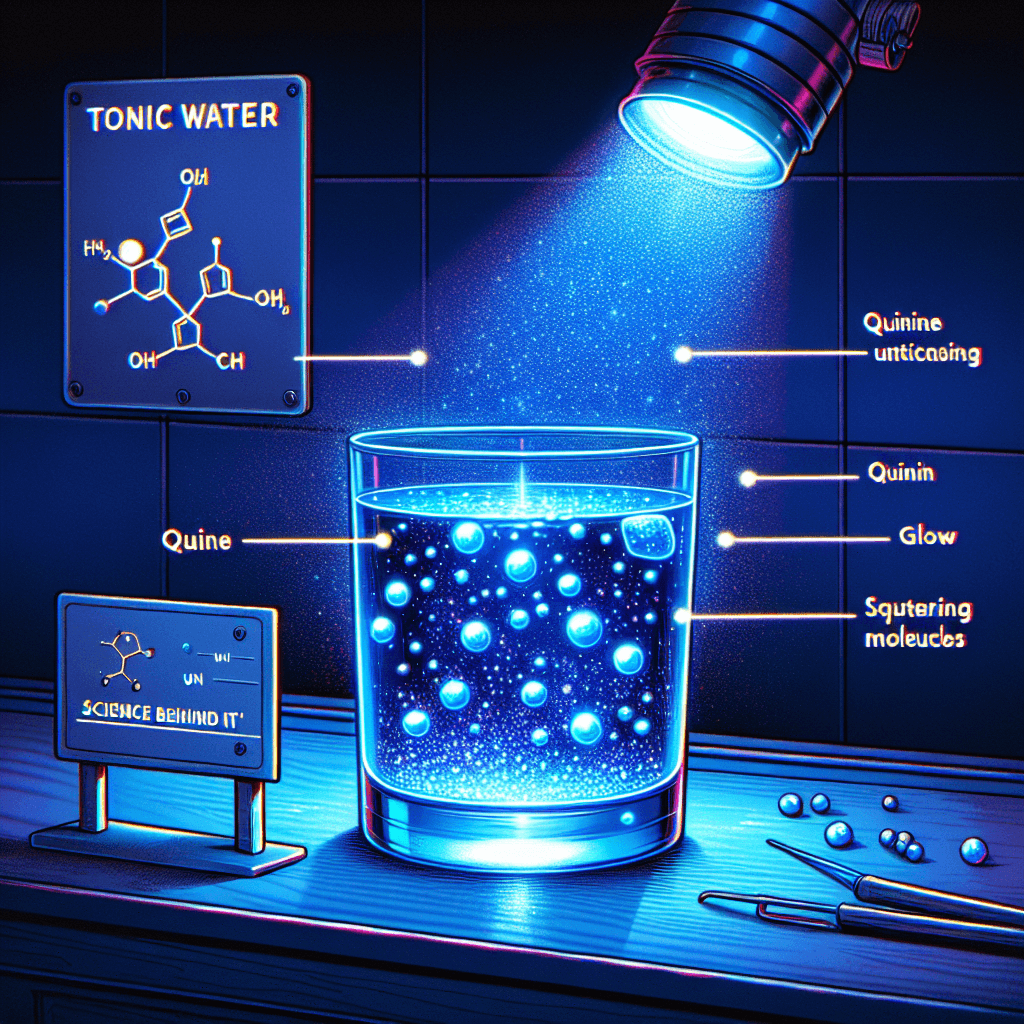The Eerie Glow: Why Tonic Water Glows Blue Under UV Light
Ever noticed your gin and tonic mysteriously glowing bright blue under a black light? Discover the fascinating science behind this cool party trick and the unique chemical that makes it happen.


Too Long; Didn't Read
Tonic water glows under a UV black light because it contains quinine. Quinine absorbs the invisible UV light and re-emits it as visible blue light through a process called fluorescence.
Blog Post Title: The Eerie Glow: Why Does Tonic Water Uniquely Glow Bright Blue Under an Ultraviolet Black Light?
(Blog Post Content Begins)
The Science Behind the Sip: Unveiling Tonic Water's UV Glow
Have you ever been at a party or bar with black lights, ordered a gin and tonic, and noticed something peculiar? As the ultraviolet (UV) light hits your glass, the normally clear tonic water suddenly emits a striking, almost ghostly, bright blue glow. It's a cool party trick, but it's not magic – it's fascinating science! This phenomenon begs the question: Why does tonic water uniquely glow bright blue under an ultraviolet black light? While other substances might fluoresce, tonic water's specific reaction is quite distinctive. This post will dive into the chemistry and physics behind this captivating visual effect, revealing the secret ingredient responsible for the glow.
The Key Ingredient: Introducing Quinine
The star player in tonic water's glowing performance is a compound called quinine. Originally derived from the bark of the South American cinchona tree, quinine has a significant history.
- Historical Roots: For centuries, quinine was the primary treatment and preventative measure against malaria. Indigenous populations in the Andes knew of the bark's fever-reducing properties long before Europeans utilized it. British officials stationed in colonial India famously mixed their medicinal quinine powder with sugar, water, and later gin to make it more palatable – inadvertently creating the precursor to the modern gin and tonic.
- Modern Tonic Water: While tonic water today contains significantly less quinine than historical medicinal doses (typically around 83 milligrams per liter or less, well below therapeutic levels), it retains enough to impart its characteristic bitter taste. Crucially, it also retains enough to exhibit its remarkable fluorescent properties.
Understanding Light and Fluorescence
To grasp why quinine makes tonic water glow, we need a basic understanding of ultraviolet light and fluorescence.
- Ultraviolet (UV) Light: Often called "black light," UV light sits just beyond the violet end of the visible light spectrum. It has shorter wavelengths and higher energy than visible light, making it invisible to the human eye. Black lights are designed to emit primarily long-wave UVA light while filtering out most visible light.
- Fluorescence: This is a process where certain molecules, called fluorophores, absorb light energy at one wavelength and then rapidly re-emit that energy as light at a longer, lower-energy wavelength. Think of it like this: the molecule gets "excited" by the high-energy UV light, and as it "calms down," it releases some of that energy as visible light.
How Quinine Causes the Blue Glow
Quinine is an excellent fluorophore, perfectly suited to interact with the UV light from a black light. Here’s the breakdown:
- Absorption: The specific molecular structure of quinine allows it to readily absorb energy from long-wave UV light, typically in the range of 350-370 nanometers (nm), which is precisely what most black lights emit.
- Excitation: When UV photons strike the quinine molecules, they excite electrons within the molecule, bumping them up to a higher, unstable energy level.
- Emission: The excited state is short-lived. As the electrons quickly return to their stable, lower-energy ground state, they release the excess energy. Critically, not all the absorbed energy is re-emitted as light (some is lost as heat/vibrations), so the emitted light has less energy and therefore a longer wavelength than the absorbed UV light. For quinine, this emitted light falls squarely in the blue part of the visible spectrum, typically peaking around 450 nm.
Why Blue? And Why Tonic Water Specifically?
The color of the fluorescence – bright blue in this case – is determined by the specific difference in energy levels between the excited and ground states within the quinine molecule. This energy gap is unique to quinine's structure, resulting in the characteristic blue emission.
While other substances fluoresce (think highlighter ink, some laundry detergents, certain minerals), tonic water's glow is notable because:
- Quinine Concentration: The amount of quinine in commercial tonic water is just right – enough to produce a clearly visible glow under UV light, but low enough to be safe for consumption and provide its signature taste.
- Clarity: Tonic water is typically clear, allowing the UV light to penetrate easily and the emitted blue light to escape without being scattered or absorbed by other colored components.
Conclusion: A Toast to Science!
So, the next time you see a tonic water glowing vividly under a black light, you'll know exactly why. It's not just a quirky visual effect; it's a direct demonstration of fluorescence, powered by the historical and chemically fascinating compound, quinine. This molecule absorbs the invisible high-energy UV light and transforms it, releasing the energy as the captivating bright blue glow we can see. It’s a wonderful reminder that intriguing scientific principles can be found even in the most common beverages. Why does tonic water uniquely glow bright blue under an ultraviolet black light? It's all thanks to the unique interaction between quinine molecules and UV radiation – a little bit of physics and chemistry brightening up our world, one G&T at a time.


